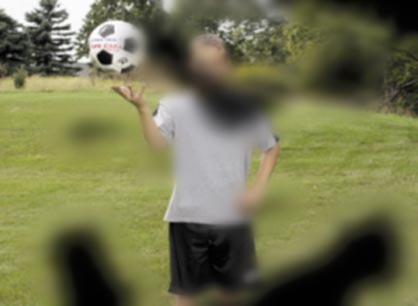What exactly is diabetic retinopathy?
Diabetic retinopathy is the main cause of blindness for people under 60 years of age. This disease affects the retinal vessels in the fundus of the eye due to increased blood sugar levels which subsequently lead to bleeding and liquid leakage from the vessels. As a result vision diminishes when the damage is in the central area of the fundus (the area of the macula). In the case of some diabetic patients who are seriously ill abnormal vessels appear (neo-vessels), which may possibly sustain bleeding and abruptly decrease eye sight to a great extent, without having treatment options for all cases. Last, there are some cases where normal eye vessels get destroyed thus blood circulation in the central area of the fundus ceases and eye sight is permanently damaged.
Who develops diabetic retinopathy?
All diabetic patients are at risk of developing diabetic retinopathy. The risk increases depending on the number of years the patient has been diabetic and as a result all diabetic patients after a number of years normally should develop some type of diabetic retinopathy. This goes for type 1 patients (juvenile diabetes) as well as diabetes type (adults).It is very important to stress that diabetic retinopathy may also appear and be a problem for diabetic patients who have managed to regulate their blood glucose levels. Still chances are higher for those diabetics who have not managed to properly regulate blood sugar to develop the disease.
What are the symptoms of diabetic retinopathy?
Unfortunately in the first stages of the disease there are hardly any symptoms in the eyes or vision even when people have sustained severe lesions in the eye fundus. When bleeding or leaks spread to the central area it is then that visual ability drops. In case of bleeding due to abnormal vessels the vision can suddenly disappear as the inside of the eye fills up with blood. Diabetic retinopathy does not cause any pain.
Is there any way to manage diabetic retinopathy?
Fortunately there is. Treatment is possible through laser technology used in the fundus of the eye once diabetic retinopathy jeopardises the patient’s sense of vision. Laser is used to restore the areas of bleeding and leakage so as to preserve or improve patient eye sight. In case abnormal vessels appear laser therapy is used to a great part of the fundus (though not its central area) to make abnormal vessels disappear and help prevent bleeding within the eye.
What should diabetic patients do?
All diabetic patients, regardless of type and number of years they have been treated for diabetes, and regardless of type of treatment, even if this is confined to proper diet and nutrition alone, must absolutely get their eyes checked (fundoscopy) at least once a year as this specific eye exam shows whether there is diabetic retinopathy, the extent thereof and whether there is need for laser treatment. Quite often, moreover, the fundus of the eye is photographed to help properly monitor the progress of the disease. It is very important to make sure serious damage to the eye fundus is prevented before such lesions irreparably impair patient vision. This is only possible through timely diagnosis and treatment.

